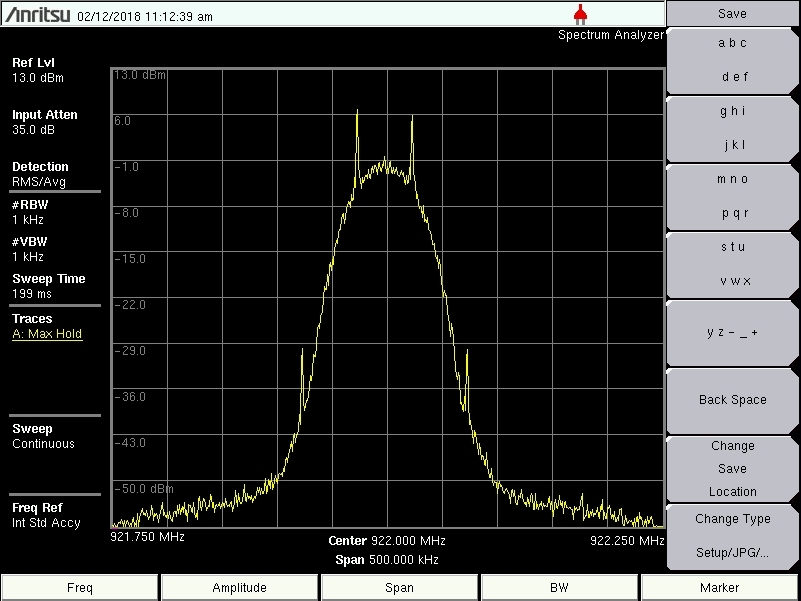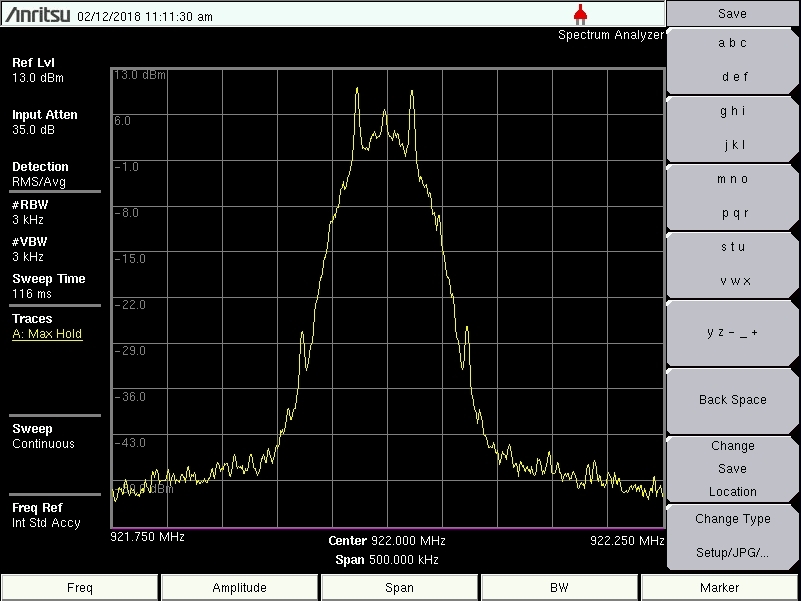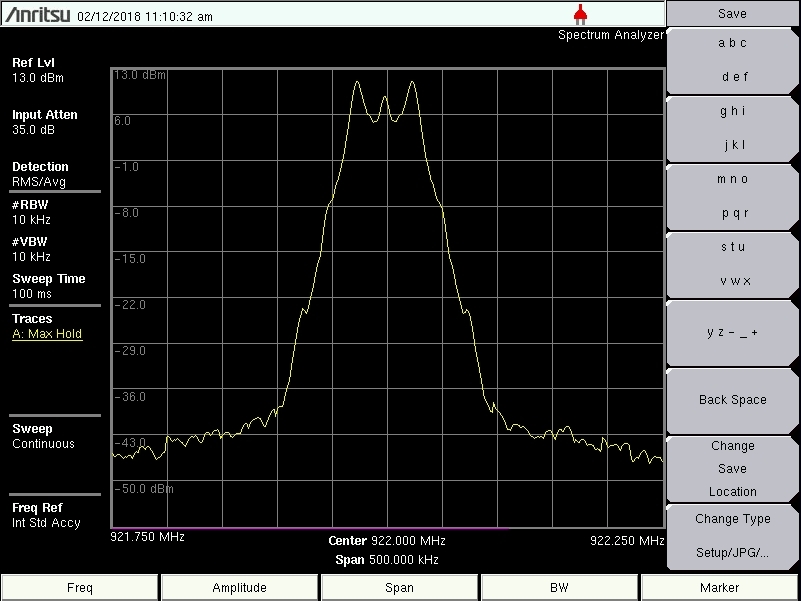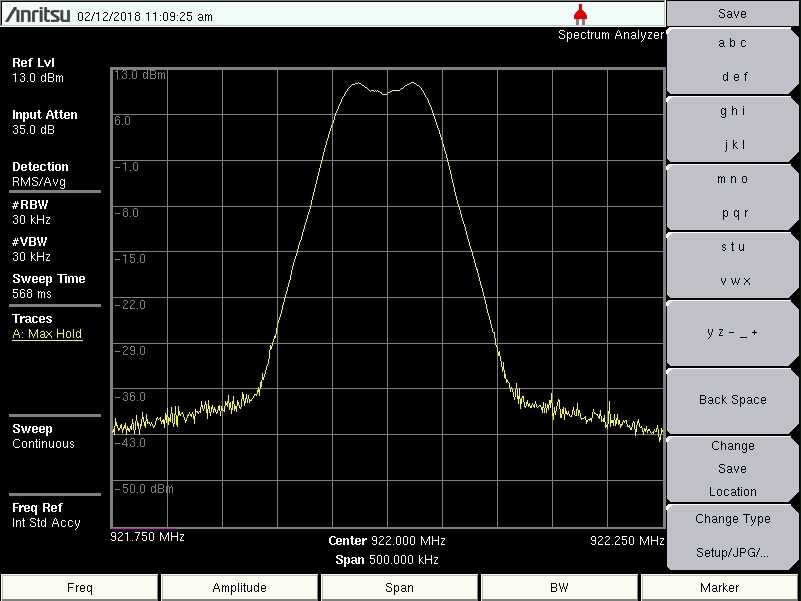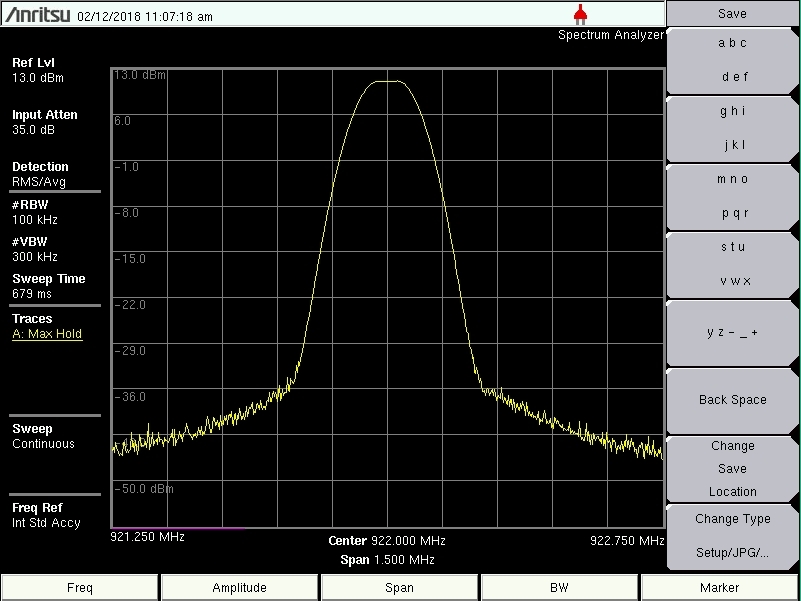Other Parts Discussed in Thread: CC1200, CC1310
Hello,
I am verifying my CC1120 designed radio under Japan ARIB STD-T108 "Low Power Radio Stations" category but cannot meet the channel mask requirement (ACP mask) because of having some out of band emissions/spurious when in transmit mode. I am setting the radio at Po=13dBm, f=922MHz, 2GFSK.
TX and RX unwanted emissions pass the requirements though.
Couple of questions,
1- Can CC1120 pass the ARIB STD-T108 "Low Power Radio Stations" with regards to the ACP mask and occupied BW? (CH-BW=200KHz, Pout=20mW and f=922MHz or so)
2- What settings in CC1120 will help the meet the ACP mask requirements and have less out of channel emissions in TX mode? (i.e. 2GFSK modulation, max bit rate=? deviation=? and etc.)
3- When testing the radio is it be valid to transmit packet data instead of CW? Is it possible that sending packet data instead of CW transmission could cause some out of band emissions/spurious?
(PS: SWRA445 is a TI report about this test for CC1200).
Thanks,
-Reza





